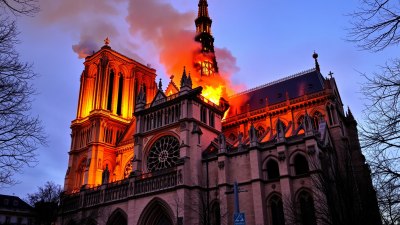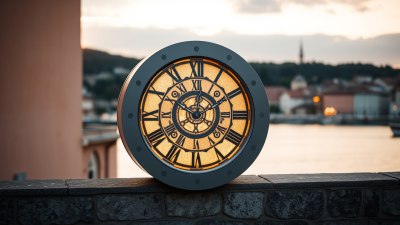Notre-Dame in France Knows What It Feels Like to Burn Quietly
Explore the resilience and history of Notre-Dame after its tragic fire in 2019.

Notre-Dame de Paris, a masterpiece of French Gothic architecture, has stood for over 850 years as a symbol of resilience, faith, and artistry. Its iconic façade and stunning stained glass windows have attracted millions of visitors each year, making it one of the most recognizable cultural landmarks in the world. However, on April 15, 2019, the cathedral faced an unprecedented tragedy—a devastating fire that led to its partial destruction. This catastrophic event sent shockwaves through the global community, stirring deep emotions and compelling reflections on the significance of heritage, memory, and rebirth.
The fire, which broke out in the evening, quickly escalated, engulfing the wooden roof and leading to the collapse of the iconic spire. As flames licked the stone walls and smoke billowed into the Parisian sky, spectators watched in horror, unsure of the fate that awaited such an irreplaceable structure. The flames that danced so viciously seemed almost poetic in contrast to the strong stonework, embodying a painful juxtaposition of beauty and destruction. This tragic moment was not just a loss of architecture; it was a loss of history, culture, and collective memory.
The Immediate Aftermath
In the immediate aftermath of the fire, the response was swift. Rescue teams worked diligently to save any art pieces and artifacts that could be salvaged from the flames. Fortunately, many priceless items from the cathedral, including the Crown of Thorns, were saved thanks to the heroic efforts of the firefighters. Yet, the sight of the charred remains of the roof and spire was a haunting image that resonated with the hearts of many, both locally and around the world.
The fire’s destruction ignited an outpouring of grief and support from people across the globe. Fundraising efforts began almost immediately, rallying donations that would ultimately exceed 850 million euros pledged for restoration efforts. This incredible act of generosity was a testament to the cathedral's significance as a beacon of hope, not just for Parisians but for humanity at large. People understood that Notre-Dame was more than just a religious structure; it was a symbol of resilience amid adversity.
Historical Significance of Notre-Dame
To fully appreciate the impact of the fire, it is essential to recognize the historical significance of Notre-Dame. Construction of the cathedral began in 1163 under Bishop Maurice de Sully and continued over two centuries, making it a hallmark of Gothic architecture. Its flying buttresses, ribbed vaults, and intricate sculptures showcased advances in design and technology that would influence the future of architecture across Europe.
Throughout the centuries, Notre-Dame has played a central role in many historical events, serving as the backdrop for royal ceremonies, national celebrations, and even revolutions. The coronation of Napoleon Bonaparte in 1804 and the gatherings during the French Revolution are but a few examples of the cathedral's integral role in shaping France's national identity.
The Restoration Process
In the months following the fire, discussions regarding the restoration plans began to take shape. French President Emmanuel Macron committed to restoring Notre-Dame to its previous glory, promising that the cathedral would rise again. A team of experts—architects, historians, artisans—was assembled, with a clear objective: to ensure the rebuilding process would faithfully replicate the cathedral's original design, while also integrating modern materials and techniques where appropriate.
However, the restoration has faced various challenges. Questions regarding design choices, debates over whether to modernize certain aspects, and the complex logistics of safely restoring such a delicate structure have all come into play. The commitment to preservation, authenticity, and attention to detail remains paramount, as the architects aim to ensure that the souls of both the building and the memories it holds are honored throughout the process.
Impact on Local and Global Communities
The fire and its aftermath have had lasting implications on the local community and beyond. For Parisians, Notre-Dame is a shared cultural touchstone—its architecture, art, and history deeply intertwined with the collective memory of the city. The anticipation of its restoration has instilled a sense of hope that transcends beyond the physical rebuilding of bricks and mortar. It reinforces the necessity of preserving cultural heritage for future generations to appreciate and celebrate.
On a global scale, Notre-Dame represents a convergence of artistic expression, religious significance, and architectural innovation. The cathedral's history and its story of survival have resonated with people across the world, provoking dialogues about the importance of cultural conservation. In times of crisis, such discussions become vital as societies grapple with maintaining their identity while confronting progress.
Lessons from Tragedy
The tragedy of Notre-Dame serves as a poignant reminder of the fragility of heritage. The swift destruction wrought by fire illustrates the potential vulnerability of cultural landmarks that many take for granted. However, it also emphasizes resilience—the ability to rise from the ashes and rebuild. Notre-Dame’s journey, first through destruction and then into restoration, highlights the strength of community, the spirit of collective resilience, and the enduring importance of preserving our history.
In addition, the fire has sparked a renewed interest in fire safety and prevention measures within historic buildings. Lessons learned will inform policies and practices that can better protect architectural treasures around the world, ensuring that such tragedies do not repeat themselves in the future. In a way, Notre-Dame is not just a monument in the heart of Paris; it has become a catalyst for change in how societies value and protect shared cultural heritage.
The Path Forward
As restoration efforts continue, the world watches with bated breath, eagerly anticipating the return of one of history’s greatest Gothic masterpieces. The goal is not only to restore Notre-Dame to its former glory but to create a space that allows visitors to interact with its heritage meaningfully. This includes integrating modern technologies that enhance the visitor experience while educating future generations about the significance of this architectural marvel.
As the restoration progresses, there are plans to reinstate key features, such as the iconic rose windows and the spectacular wooden roof structure, which previously adorned the cathedral’s skyline. The grandeur of the building will serve as a reminder of resilience not just for Parisians, but for everyone globally as we rebuild, reflect, and renew in the aftermath of destruction.
Reflection on Cultural Heritage
The journey of Notre-Dame emphasizes the necessity of cultural heritage in shaping identity and memory within societies. As individuals and communities, we have an innate responsibility to cherish the past and preserve the art, architecture, and traditions that define us. This commitment becomes especially crucial as we confront modern challenges, whether they involve climate change, urban development, or shifting social dynamics.
Notre-Dame, in its continued rebirth, serves as a beacon of hope. It represents not only the rebuilding of an architectural marvel but the restoration of shared human experiences and emotions that bind us all. As visitors return to its hallowed halls, they will not only witness the beauty of a rebuilding structure but feel a sense of unity, empathy, and continuation of stories that span centuries. The spirit of Notre-Dame will live on, embracing both the scars of its past and the promise of its future.











